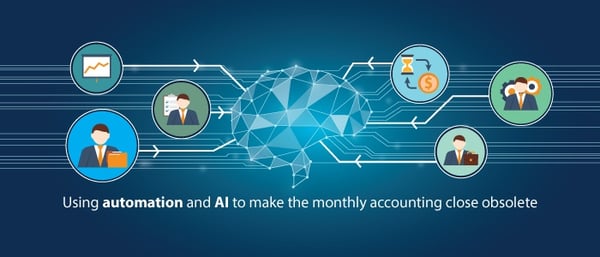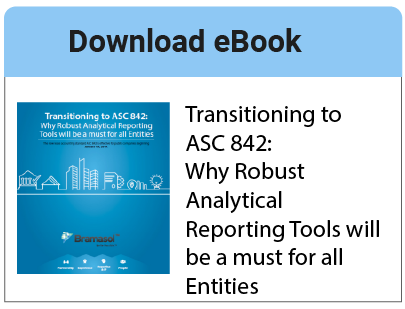Whether you’re a CFO or a financial controller, you know how much time and effort you and your team spend deep in concentration to get your monthly accounting figures to balance. Your accounts payable and accounts receivable work doesn’t get much attention unless things go wrong, but all the time you need to stay on top of your tasks to keep things running smoothly.
As well as the finance department being seen as a cost center, there’s another problem. Your people are so busy with their regular monthly tasks that they don’t have space to work on the more insight-led investigative and analytical work. Instead of doing work that could be a point of differentiation for your business, they’re occupied with the standard, repetitive tasks that everyone else is doing.
 I want to challenge the status quo that says that we have to keep putting our time and effort into monthly account closes. The same goes for the idea that your accounting team has to be a cost center.
I want to challenge the status quo that says that we have to keep putting our time and effort into monthly account closes. The same goes for the idea that your accounting team has to be a cost center.
Think of it like this: if you could free your team from that 10–15 days they spend each month on traditional account close work, what creative opportunities could you empower them to unlock?
Could those people start lifting the analytical burden from CFOs and financial controllers, helping the business to come up with more insights that can lead to action? How much better off would your organization be if you could spread the load of analysis?
This should sound good to any CFO or controller – being more agile by optimizing costs and usage of staff and doing work that can differentiate your business.
So, how can we make this change a reality? The answer is to get automation and AI to handle the heavy lifting. It’s the gateway to improving efficiency and driving down costs.
Let’s look at some areas where automation and AI can streamline your financial operation. As an added bonus, automating work like this can help your organization to achieve its compliance goals.
 Predictive Analysis and Financial Insight
Predictive Analysis and Financial Insight
Predictive analysis means you don’t need to wait until the end of your accounting period to “get the numbers.”
By analyzing and estimating prior relationships between line items and accounts, your automated systems can predict the amounts that will end up as final at month end.
Whether it’s employee salaries, building rents or anything else that could be reasonably predicted, there’s no need to wait until month end to book those expenses. You could book them at any time that suits you, even months in advance. Check our recent blog for Creating a Roadmap to help CFOs through Financial Transformation Maze.
 Accounts Payable
Accounts Payable
AP clerks often take days per area when reconciling accounts, especially when there is a high volume of POs with inventory.
Lifting that burden could give you an extra 2–3 days of that AP clerk’s time. With that bandwidth, you could assign them to analytical projects such as duplicate vendor analysis.
Or they could review and optimize vendor discount programs, where there are often missed opportunities for achieving percentage discounts for early pay.
 Accounts Receivable
Accounts Receivable
Every finance team also has AR on the other side of AP. AR clerks spend many days applying payments to invoices to get the AR aging correct. This task needs manual concentration but is inherently automatable.
If that responsibility were taken from the AR team, how could a controller redeploy them to work on value-adding tasks? Perhaps they could make the controller’s life easier by inheriting some of the work around analyzing DSO metrics and looking at trends in customer payment schedules to optimize cash collections.
Pushing this work down the chain means the controller has more bandwidth, which could be used to support the CFO in thinking about non-repetitive tasks.
 Intercompany Matching
Intercompany Matching
Automation doesn’t need to be limited to individual departments. There are also opportunities to automate more broadly, such as in intercompany matching, where known parameters can be used to reconcile and eliminate transactions.
When performing such tasks between trusted groups of companies, smart automation can have a multiplying effect in terms of time saved across the whole group, potentially freeing up significant time for AP and AR teams alike.
How Increased Automation Affects Finance Teams in the Real World
We know there’s real value in reducing the burden associated with doing monthly account close work. But by freeing up your team’s time, should that necessarily lead to those people being redeployed on other tasks?
That’s certainly one option – and an important one if you want to differentiate your business through the value generation that’s possible with good analytical accounting.
In many cases, organizations take a different approach. Automation and AI help them optimize their operation, and the end result means fewer people are needed to do the work. This sort of streamlining leads to the cost savings that businesses want to achieve.
Another popular approach to producing a more agile operation is for organizations to move in-house financial functions to a shared backoffice model. This can be a lean way of working and takes advantage of automation best practice.
I can’t say what’s right or wrong for individual organizations, but I think it’s important to emphasize that automation brings value to the business as a whole, and if a proportion of that freed bandwidth is re-routed to investigative and analytical work, this will give the business a better chance of differentiating and remaining relevant in the long term.
Will you Increase your Efficiency by Automating More?
I think there’s a clear case for making your finance team more agile and efficient by lifting the burdens of month-end work. This is the sort of repetitive activity that’s perfect for automation and AI, and taking such tasks off your plate will free up your people to do more of the investigative and analytical work that sets your organization apart from the competition.
Not only can this be a smart cost-saving move but also it can help you to tighten up your processes, be better placed to achieve compliance, and run an optimized department that becomes a profit center.
One way to optimize your processes is to think about deploying cloud-based analytics, such as those found in S4/HANA. Check our precise solution on Analytics for Rev Rec Disclosure Reporting or Visit our Application at SAP App Center.
Find out more by reading our free ebook about Using Analytics for Compliance with New Leasing Standards, Titled "Transitioning to ASC 842: Why Robust Analytical Reporting Tools will be a must for all Entities"


